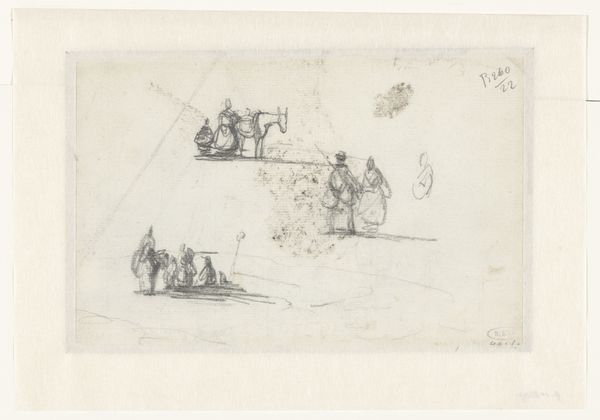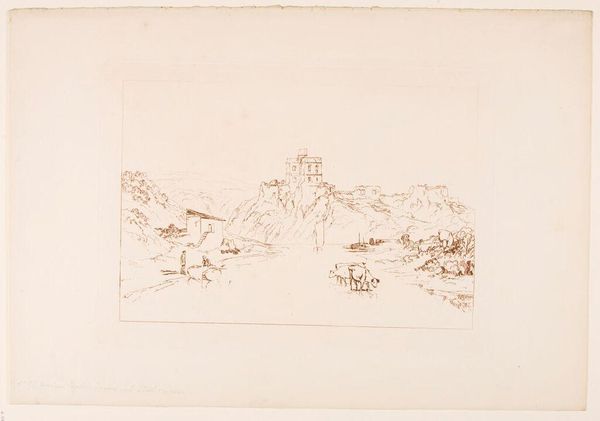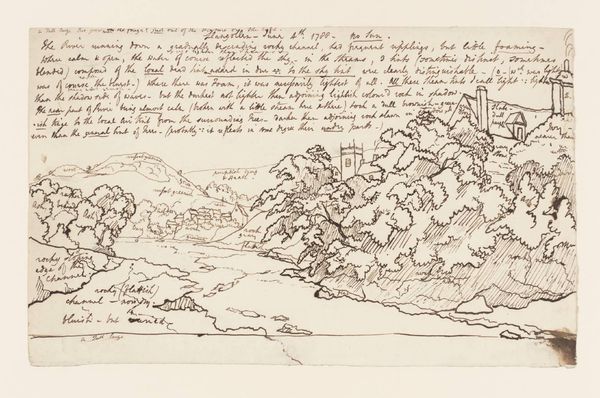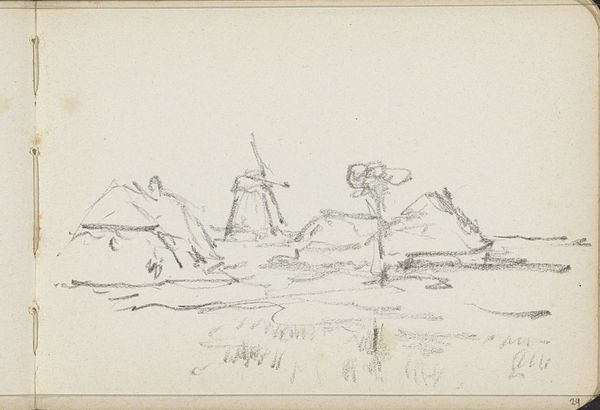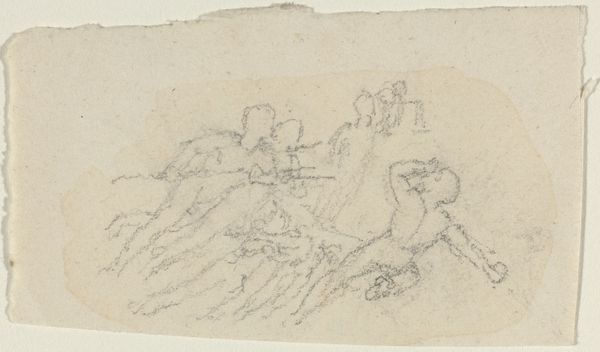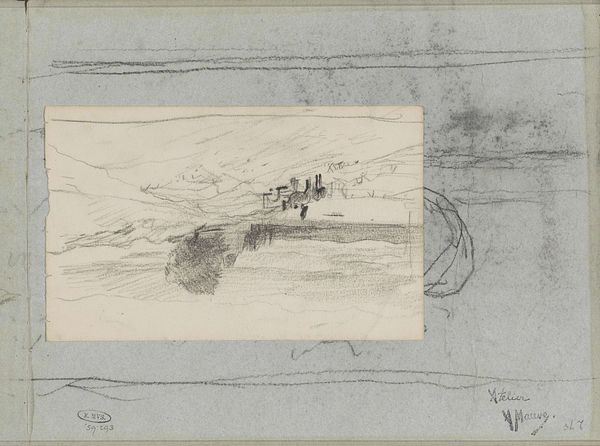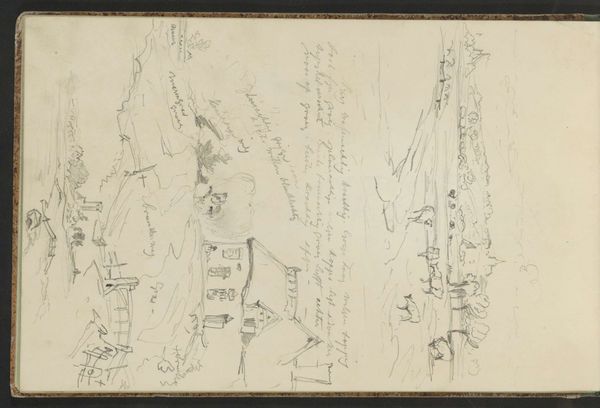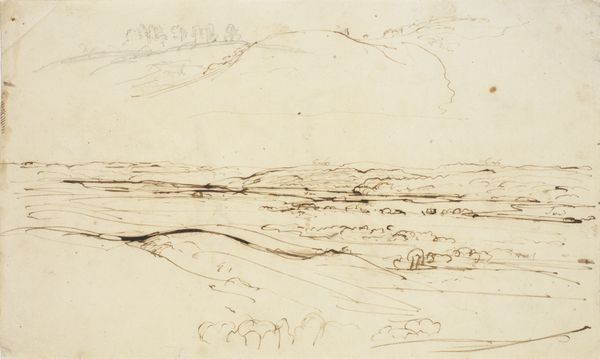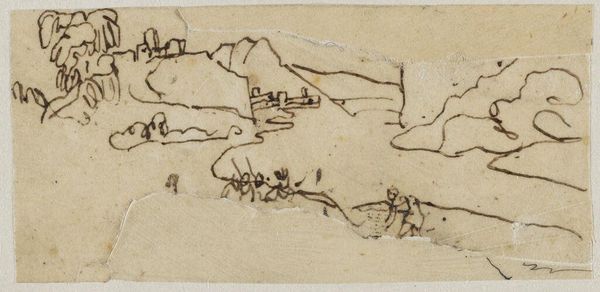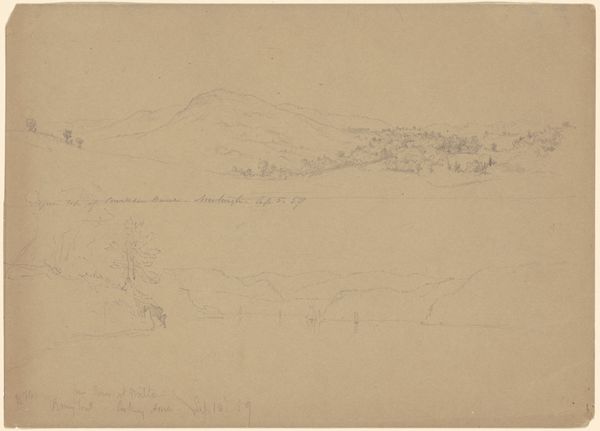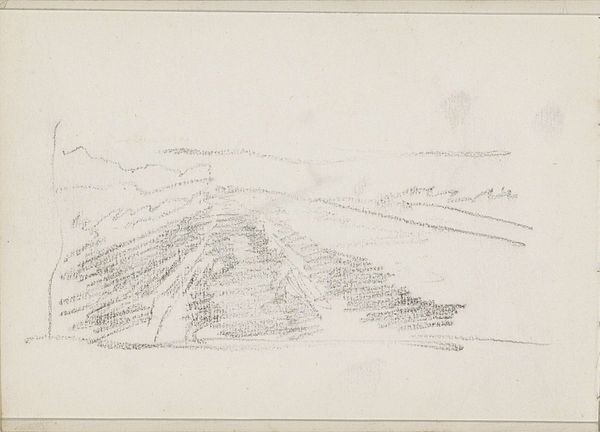
Kampeerplaats in de bergen van West-Java; vier Europeanen en drie Soendanese vrouwen drinken bij een vuur naast een tent c. 1819
0:00
0:00
drawing, ink, pencil
#
drawing
#
landscape
#
etching
#
ink
#
romanticism
#
pencil
#
orientalism
#
genre-painting
#
watercolor
Dimensions: height 122 mm, width 190 mm
Copyright: Rijks Museum: Open Domain
Editor: This drawing, titled "Kampeerplaats in de bergen van West-Java" or "Camping in the mountains of West Java", was created around 1819 by Jannes Theodorus Bik. It uses ink and pencil, and what strikes me most is the depiction of a shared moment between people of very different backgrounds. What do you see in this piece that stands out from a historical perspective? Curator: What immediately captures my attention is the inherent power dynamic represented within this seemingly casual scene. We see European men enjoying leisure while accompanied by Sundanese women, presumably in service roles. It speaks volumes about the colonial context of the time and the gaze through which Bik, as a European artist, perceived and presented this reality. How might this image have been viewed in the Netherlands? Editor: Perhaps as a picturesque scene of exploration, emphasizing the exoticism of Java and the supposed dominance of the colonizers? I guess the everyday leisure activity is intertwined with colonial structures. Curator: Precisely. Consider the landscape tradition within which this artwork is categorized. It becomes less about pure scenery and more about staking a claim. This image circulated back in Europe and visually solidified narratives of Dutch authority. How do you see the depiction of the indigenous women furthering this dynamic? Editor: They are somewhat passively placed in the landscape, unnamed and lacking individual identity in relation to the identified European figures. They appear as part of the exotic backdrop, thus reinforcing that very narrative of Western superiority. It's much more layered than it initially appeared. Curator: Exactly. By paying closer attention to such scenes, we gain insight into how art became a vehicle to maintain these colonial ideologies, and further explore it within current conversations about museums. Thank you for opening my eyes! Editor: Thanks for highlighting those key layers! I'll definitely approach similar works with a much more critical eye now.
Comments
No comments
Be the first to comment and join the conversation on the ultimate creative platform.
